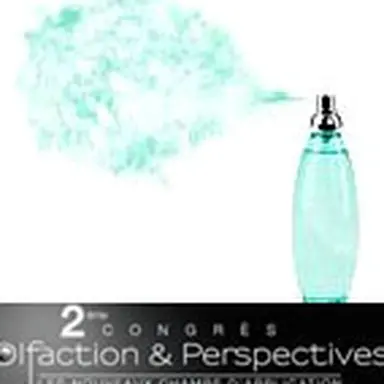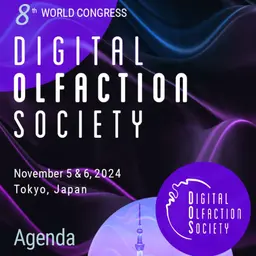
The second Olfaction & Perspectives congress held by Cosmetic Valley, ISIPCA, and the Paris-Ile-de-France Chamber of Commerce and Industry left a lingering scent with its participants. The definition of sillage, the conditions for perceiving it, and the methods available to measure and optimize it were outlined by Christelle Porcherot, Senior Scientist, and Jean-Jacques Rouge, Perfumer, both employed by Firmenich. This is our report.
What is sillage?
Sillage, a French term, is defined as the scent left behind by one’s perfume.
Christelle Porcherot of the Firmenich group specifies that it is:
• The perception of a fragrance worn by another person
• The perception of the trace of a fragrance worn by a person in the street.
In both cases, there must be a moment when attention is captured, as well as a phenomenon of recognition. These depend on the pleasing nature, the emotion felt, the signature, and familiarity with the fragrance.
The speaker added that subjectivity also comes into play, and that according to cultural codes, to the context, and to individual experience, commenting on it to the fragrance wearer may or may not be called for. In France, for example, the mention of one’s perfume is taken as a compliment. But in Japan, alluding to such a thing is best avoided.
Perceiving sillage
To perceive a sillage, three conditions must take place in a particular order, moving from the fragrance given off and worn by a person to another person who will sense/smell it:
1/ Emission of volatile compounds from the odorous source
The fragrance, applied to the skin, hair, or clothing, will develop and construct itself according to the surface it has been applied to. It evaporates upon contact with the air. This evaporation will depend on the characteristics of volatility (ability to vaporize) and solubility (ability to dissolve, to diffuse), as well as on the partition coefficient (measurement of differential solubility in two solvents) of the odorous source.
2/ Transportation of volatile compounds and dilution in the air
These factors are independent of the molecular properties and are facilitated by turbulence and convection (internal movements) in the air.
3/ Detection by the olfactory receptors
After transportation takes place, the volatile compounds enter into the field of perception of the receiving person’s olfactory system, which can distinguish thousands of odorous molecules nasally and retronasally. [lien id 2904]At this point, psycho-physical characteristics that are unique to each of us come into play, interacting with the other senses, which can be scientifically quantified and measured, such as the detection threshold and the dose-response curve.
Measuring methods
Researchers and perfumers have access to several methods and instruments to measure how intensely a fragrance is perceived at a certain distance. Sensory or analytical measures or models:
The modelling method
A model wearing a fragrance walks in front of a panel of experts located approximately 80 cm from the model with their eyes closed. Each fragrance is modelled four times prior to evaluation: there are two models and two walks for each fragrance.
The advantage of this method is that it closely resembles the reality of how a fragrance worn by someone walking down the street is perceived. But it is hard to reproduce, since the experience will be different according to the speed with which the model wearing the fragrance walks.
The closed room diffusion method
The expert is now placed in a closed room where a sensory window is opened: the odorous source to be evaluated is located 80 cm from the expert. Each fragrance is presented twice. Unlike the preceding method, this method may be reproduced, but the experience changes over time (evaporation of the fragrance).
The Pulscent® method
The speaker then presented her tailor-made measurement instrument, developed by Firmenich: the Pulscent®. The protocol: perfume is applied to a glass slide (a surface that presents similar evaporation to that of human skin), which is placed upon a plate heated to 32°C. Next, a puff of air is blown onto the slide. The judges then evaluate the intensity of the scented air at a distance of 80 cm from the odorous source.
This method combines the performances and results of other methods. It is a reproducible modelling of the fragrance on skin. It imitates sillage under controlled conditions.
For the perfumer, having these tools available makes it possible to evaluate the performance of fragrances already present on the market (determining those with low sillage such as the florals, vs those with pronounced sillage like the orientals) and the performance of diffusive raw materials. When creating new formulas, the perfumer will be able to optimize the sillage to align with consumer expectations.
HLH













